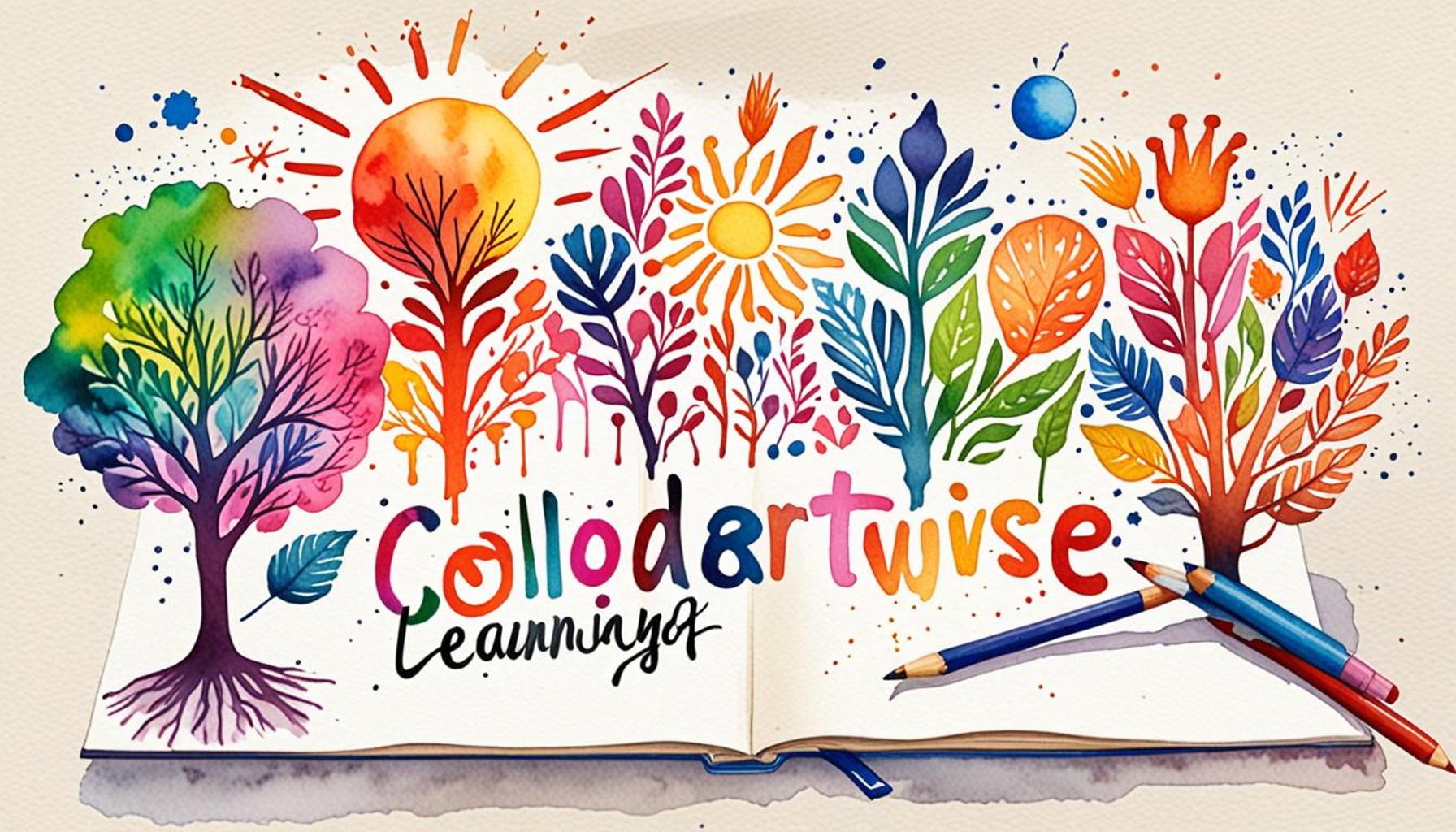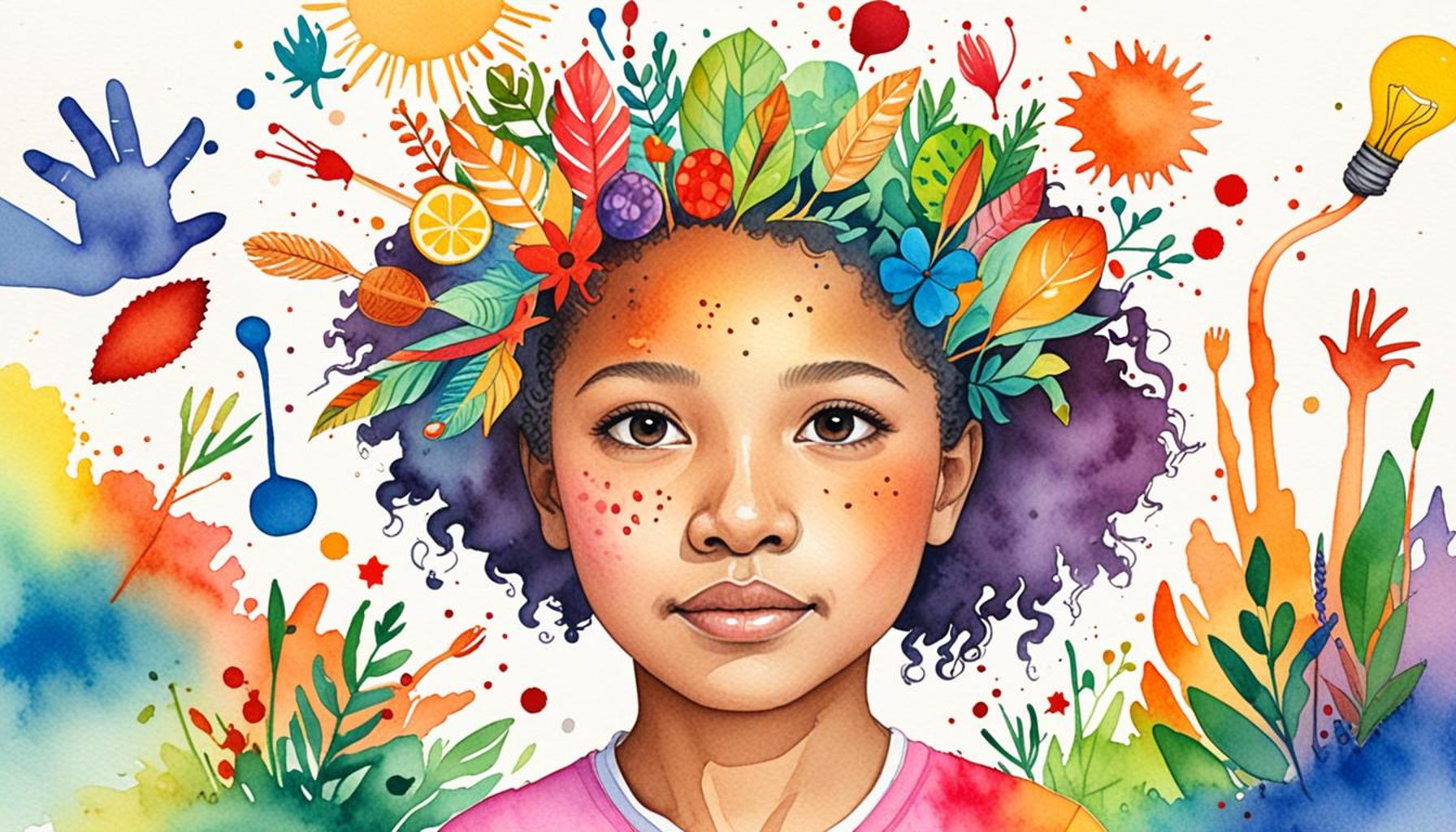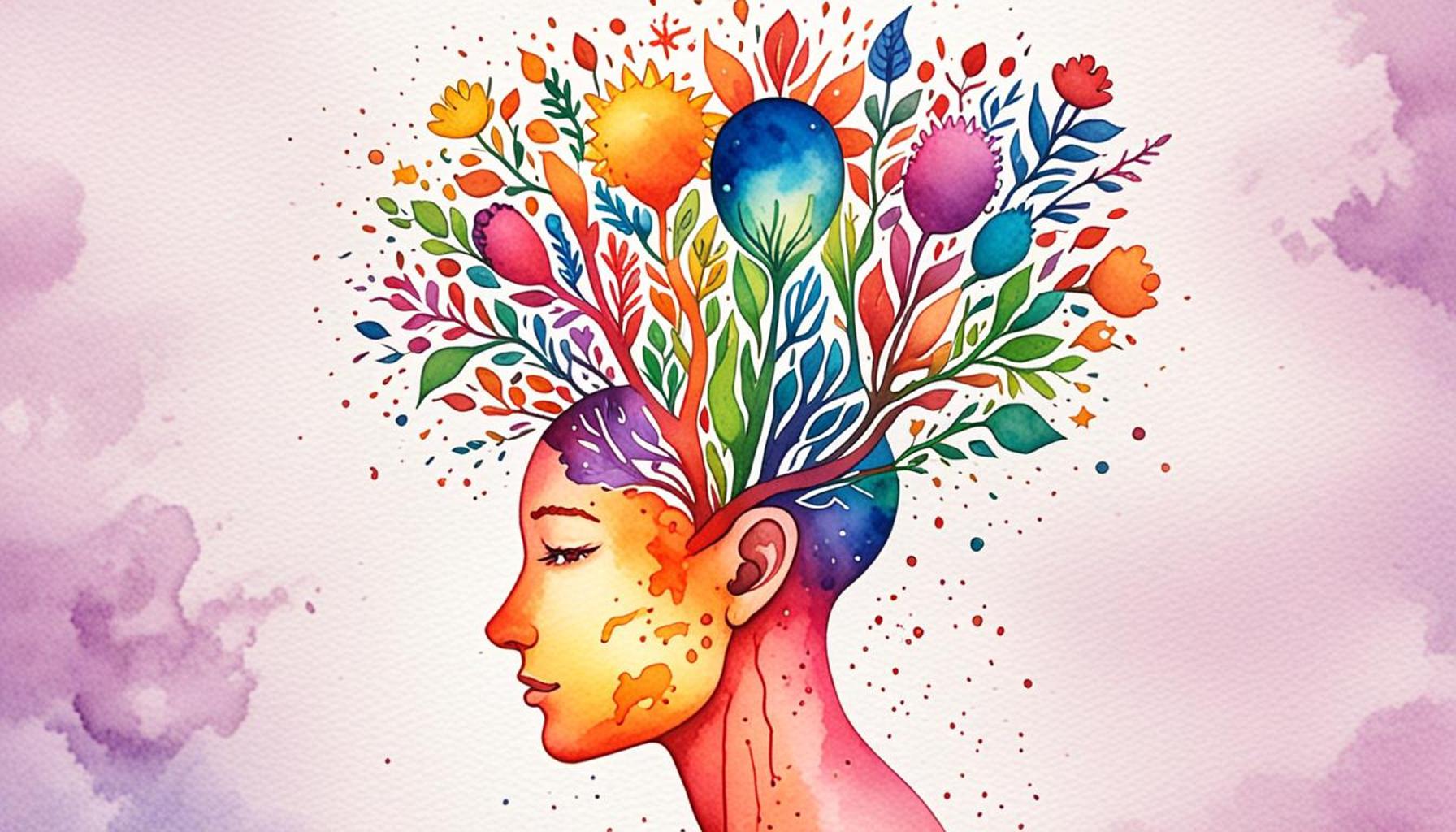Boost Growth Mindset with Collaborative Learning Techniques in Education

Exploring Collaborative Learning for a Growth Mindset
In today’s fast-paced educational landscape, fostering a growth mindset is becoming increasingly essential for both teachers and students. Coined by psychologist Carol Dweck, the concept of a growth mindset is about believing that one can develop abilities through dedication and hard work. This view creates a love for learning and a resilience that is essential in education.
As educators search for fresh, effective strategies to enhance learning, collaborative learning techniques have emerged as transformative tools that significantly strengthen the growth mindset. These methods are not just about teamwork; they are about creating shared experiences where each individual’s strengths contribute to the group’s success and learning process.
The Power of Collaboration in Education
Understanding the importance of collaboration can lead to numerous benefits. First is the development of enhanced problem-solving skills. When students engage in group discussions and receive peer feedback, they learn to approach challenges from multiple perspectives. This broadens their analytical and critical thinking skills, equipping them for real-world problems.
Another significant advantage is increased engagement. In collaborative settings, students tend to feel more connected and motivated. They are part of a collective pursuit of knowledge, which makes learning less about competition and more about shared success.
Additionally, collaborative learning brings about boosted confidence. When students learn from one another, they see diverse ways of thinking and problem-solving. This exposure not only builds self-assurance but also fosters an appreciation for different viewpoints.

Top 5 Collaborative Learning Techniques
This article will delve into the top 5 collaborative learning techniques that promote academic success while cultivating a resilient growth mindset in learners. From peer teaching, where students teach course material to classmates, to jigsaw activities where each group member becomes an expert in a different topic, these methods are reshaping educational environments for the better. As you explore these techniques, consider how they can be incorporated into your teaching strategies or learning environments to create a more inclusive and dynamic educational experience.
Prepare to uncover how these methods can transform educational practices, leading to environments that not only support academic achievement but also nurture an enduring passion for learning and personal growth.
LEARN MORE: This related article may interest you
Top 5 Collaborative Learning Techniques: Strengthening Growth Mindset in Educational Environments
In the ever-evolving landscape of education, the importance of cultivating a growth mindset cannot be overstated. A growth mindset, a concept developed by psychologist Carol Dweck, refers to the belief that abilities and intelligence can be developed through dedication, hard work, and resilience. Unlike a fixed mindset, which suggests that abilities are static, a growth mindset embraces challenges and views failures as opportunities for learning. This approach has profound implications for students, educators, and learning environments as a whole.
Collaborative learning techniques play a pivotal role in nurturing this mindset. They not only enhance student engagement but also foster resilience, adaptability, and a genuine love for learning. When executed effectively, these techniques transform classrooms into dynamic spaces where students learn to value teamwork, embrace challenges, and develop critical thinking skills. Here, we delve into the top five techniques that effectively embed a growth mindset into educational settings, complete with examples and explanations to encourage deeper exploration and understanding.
5. Peer Teaching: Enhancing Understanding Through Collaboration
Peer teaching is a powerful strategy where students take on the role of teachers to educate their classmates on specific concepts or skills. This method allows learners to engage deeply with the material, thus reinforcing their understanding. When a student explains a topic to their peers, they utilize their unique perspective and address any misconceptions, facilitating a reciprocal learning process. In fact, research reveals that teaching others can improve retention and comprehension by up to 75%, due to the engagement of both higher-order thinking and relatability factors.
Key benefits of peer teaching include:
- Confidence Building: Students often feel more comfortable communicating with peers than with instructors. This peer interaction can create a more relaxed and open learning environment where questions and discussions are encouraged.
- Communication Skills: The process of explaining ideas verbally enhances students’ communication and presentation skills. These skills are essential in various professional scenarios, where clear and confident communication can lead to better outcomes.
- Critical Thinking: To effectively convey concepts, students must process and distill information, leading to enhanced critical thinking and cognitive skills. This requirement to simplify and articulate complex topics strengthens their mental agility and depth of understanding.
Implementing peer teaching in classrooms can significantly boost student morale and promote a community of support. This technique lays the baseline for a growth mindset as learners realize the belongingness and value in sharing knowledge, encouraging them to approach future challenges with an open and collaborative mindset.
4. Group Projects: Collaborative Problem-Solving
Group projects are a staple in educational curricula as they foster valuable teamwork and organizational skills among students. In these collaborative activities, students work together towards a common goal, often facing unique challenges that require creative solutions. This collective problem-solving approach encourages risk-taking and innovation.
Significant advantages of group projects include:
- Diversity of Ideas: With multiple perspectives contributing to the project, students are exposed to a wider range of ideas and approaches, leading to innovative solutions and a richer learning experience.
- Accountability: Group work promotes responsibility and accountability, as each member contributes to the project’s success. This sense of accountability motivates students to perform their best and learn from each other.
- Social Skills Development: Students learn to navigate interpersonal dynamics, develop empathy, and practice effective communication, which prepares them for real-world interactions.
Working in groups encourages students to embrace challenges and view them as opportunities for collective growth, reinforcing a critical facet of a growth mindset. Positive teamwork experiences can stimulate a desire for ongoing collaboration, both academically and professionally.
3. Collaborative Technology: Bridging Distance Learning Gaps
In today’s digital world, collaborative technology has revolutionized the way students interact and learn. Platforms like Google Classroom, Microsoft Teams, and Zoom enable real-time collaboration, allowing students to connect and work together seamlessly, even from different locations. These tools break down traditional barriers of physical classrooms and widen accessibility.
The impact of collaborative technology includes:
- Accessibility: Technology ensures that all students can participate and share ideas, leveling the playing field and making diverse voices heard. This inclusivity fosters a supportive learning environment for all.
- Real-World Skills: Proficiency in digital collaboration equips students with skills that mirror those demanded in modern workplaces, such as teamwork across time zones and digital communication.
- Immediate Feedback: Technology allows for real-time feedback, which is crucial for improving and learning effectively. The ability to quickly refine work based on feedback accelerates learning and promotes adaptability.
This method encourages students to take the initiative and adapt to new platforms, enhancing their growth mindset by navigating and mastering challenges associated with technology. The familiarity with digital tools prepares them for a tech-driven world, further reinforcing the learning process.
2. Reflective Journals: Critical Self-Assessment
Reflective journaling encourages students to document their learning journeys, thoughts, and feelings throughout collaborative activities. This process fosters self-awareness and critical reflection on personal growth, an essential component of a growth mindset culture.
Benefits of using reflective journals in education include:
- Enhanced Emotional Intelligence: By understanding their learning process, students better manage their emotions and reactions, leading to improved emotional resilience.
- Goal Setting: Journals help students recognize areas for improvement and set actionable goals, promoting accountability and self-directed learning.
- Encouraging a Growth Mindset: Regular reflective practice helps students see challenges as opportunities for growth, allowing them to develop persistence and patience in overcoming obstacles.
Encouraging students to reflect on their experiences enhances resilience and adaptability—key characteristics of a growth mindset. The journaling habit transforms learning from a passive activity into an engaging reflection process, reinforcing the understanding that growth stems from continuous self-assessment and learning.
1. Collaborative Learning Environments: A Culture of Support and Growth
The most effective method for strengthening a growth mindset in educational settings is by creating collaborative learning environments that prioritize cooperation, trust, and shared responsibility for learning outcomes. Such environments support students in developing interpersonal relationships and expanding their abilities through partnership and teamwork. These environments are intentionally designed to encourage interaction, questioning, and the exploration of ideas, resulting in a culture of inclusivity and mutual respect.
Creating a collaborative learning environment involves several strategies and considerations such as:
- Interactive Spaces: Designing classrooms that facilitate group work and discussion encourages dialogue and peer interaction.
- Inclusive Practices: Ensuring that every student feels valued and has the opportunity to contribute helps build a sense of belonging within the classroom community.
- Supportive Educators: Teachers who act as facilitators rather than directors of learning create an atmosphere that empowers students to take ownership of their education journey.
A thriving collaborative learning environment not only supports academic achievement but also fosters the social and emotional growth of students. By embedding a culture of support and growth, these environments prepare students to be lifelong learners and contributors to society, equipped with the skills and mindset needed to succeed in an increasingly complex world.
In conclusion, integrating these top collaborative learning techniques within educational frameworks is essential for cultivating a growth mindset. Such practices not only enhance academic success but also develop adaptable, resilient individuals who thrive on challenges and view learning as a lifelong journey.
| Category | Description |
|---|---|
| Student Engagement | Collaboration harnesses collective motivation, allowing students to take charge of their learning, thus significantly enhancing participation and interest in educational activities. |
| Diverse Perspectives | In collaborative environments, students are exposed to a wide array of ideas and viewpoints, fostering critical thinking and encouraging them to analyze situations from multiple angles, which is a vital skill for personal and professional growth. |
| Emotional Intelligence | Through collaboration, students learn to recognize and manage their own emotions, while also developing important empathetic skills that are essential for building strong interpersonal relationships in any future endeavor. |
| Problem-Solving Skills | Collaborative learning entails facing challenges together; therefore, students enhance their ability to tackle complex problems through creative brainstorming and pooling their resources, which leads to innovative solutions. |
The theme “Técnicas de Aprendizagem Colaborativa” significantly contributes to creating a stimulating educational atmosphere. It powers the development of essential skills by shifting emphasis from individual to group achievements. The concept of mindset heavily influences learning strategies, and by employing collaborative techniques, educators can instill growth-oriented attitudes in their students.Perhaps one of the most profound impacts of these collaborative learning techniques is the improved communication ability amongst peers. Active discussions and exchanges of ideas cultivate a space where students feel comfortable expressing themselves. This communication actively facilitates literacy skills, promotes clarity of thought, and enhances overall characteristics beneficial not only academically but socially as well.Additionally, the exploration of technology tools can play a vital role in enhancing collaborative learning experiences. Platforms such as digital forums, group discussion applications, and interactive project management tools not only make group activities more efficient but can also broaden learning access, catering to diverse learning styles. Hence, students are not merely participants, but rather active participants in their educational journey.The integration of collaborative learning techniques into the curriculum promotes an ecosystem where educators can observe the tangible growth of their students’ skills, resulting in a robust educational framework that prepares students for future challenges. Whether instilling critical thinking, problem-solving, or emotional intelligence, collaboration brings with it a wave of opportunities for personal and collective growth, reshaping the educational landscape.
ADDITIONAL INSIGHTS: Expand your understanding here
Frequently Asked Questions About Collaborative Learning Techniques
What are collaborative learning techniques, and why are they important?
Collaborative learning techniques are educational strategies that involve students working together in pairs or groups to achieve shared learning objectives. These techniques are essential because they help develop critical thinking, communication, and problem-solving skills. By engaging in collaborative activities, students often experience a deeper understanding of the material and learn how to effectively share knowledge with others. This approach also nurtures a mindset of growth, where learners are encouraged to embrace challenges and view failures as opportunities to improve.
How do collaborative learning techniques influence the mindset of growth in students?
Collaborative learning techniques foster a mindset of growth by creating a supportive environment where students feel safe to take risks and make mistakes. In group settings, students are exposed to diverse perspectives and ideas, which helps them develop open-mindedness and adaptability. The collaborative process encourages students to give and receive feedback, learn from their peers, and recognize that intelligence can be developed through effort and collaboration. This reinforces the belief that abilities can be improved with time and practice, which is the cornerstone of a growth mindset.
Can you provide examples of collaborative learning techniques used in educational settings?
Some common collaborative learning techniques include think-pair-share, where students first think about a question individually, then pair up to discuss their thoughts, and finally share their conclusions with the larger group. Another method is jigsaw, where each member of a group is assigned a different portion of a topic to research and then teach to their group members. Group problem-solving, peer teaching, and collaborative projects are also widely used to engage students in meaningful collaboration and active learning.
What challenges might educators face when implementing collaborative learning in their classrooms?
While collaborative learning offers many benefits, educators may encounter several challenges, such as uneven participation, varying skill levels, and potential interpersonal conflicts among students. To address these issues, educators need to carefully plan group activities, establish clear roles and expectations, and create an inclusive atmosphere where each student feels valued. Providing guidance and support, alongside regular feedback, can help mitigate these challenges and ensure that collaborative learning is effective for all participants.
How can technology enhance collaborative learning techniques?
Technology can significantly enhance collaborative learning by providing tools that facilitate communication and interaction among students. Online platforms and educational apps allow students to collaborate in real-time, even when they are not physically present in the same location. Tools like shared documents, discussion forums, and virtual meeting spaces enable students to seamlessly work together on projects, exchange ideas, and provide feedback. Additionally, technology can offer personalized learning experiences and access to a wealth of resources that can help broaden students’ understanding and engagement with the material.
YOU MAY ALSO LIKE: Read this other article
Conclusion
The journey through collaborative learning techniques reveals the profound impact these strategies can have on nurturing a growth mindset in educational environments. By emphasizing shared responsibility, interactive engagement, and a culture of open-mindedness, educators empower students to transcend traditional learning barriers and embrace challenges as opportunities for growth.
Among the key takeaways is the transformative power that collaborative learning wields in developing critical thinking skills and encouraging deeper understanding. These techniques, when harnessed effectively, create vibrant educational ecosystems where students feel valued and motivated. The inherent focus on group dynamics ensures that knowledge is not just consumed, but actively constructed through dialogue and collective inquiry.
Moreover, adopting a growth mindset within this context fosters resilience and adaptability, crucial traits in an ever-evolving world. Students learn to view failures as stepping stones, fostering a resilient mindset geared toward continuous improvement. Notably, the reinforced social interaction aids in developing empathy and teamwork, essential components in both personal and professional realms.
As educators and institutions prioritize collaborative learning, it’s pivotal to equip themselves with practical tools and strategies to facilitate such an environment effectively. This calls for ongoing training and reflection on best practices to adapt to diverse learning needs. Encouraging students to become active participants in their own learning journeys not only enhances academic achievement but also prepares them for lifelong success.
In conclusion, by integrating collaborative learning techniques, educators can strengthen the foundation of a growth mindset, ensuring that students are prepared to thrive in dynamic and interconnected landscapes. The journey doesn’t end here; it’s an ongoing commitment to fostering an environment where curiosity, creativity, and critical thinking flourish.



